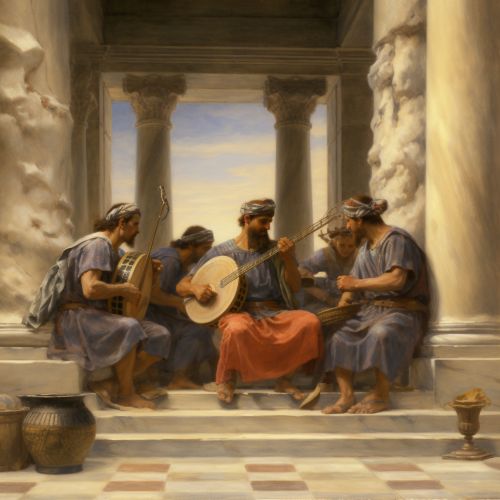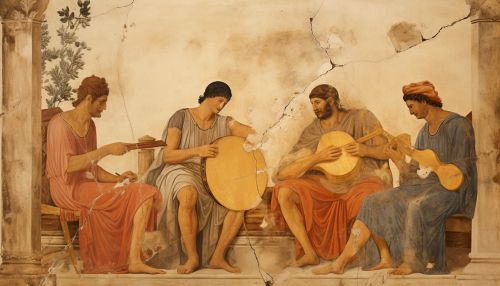Musical mode
Introduction
Musical mode refers to a type of scale, coupled with a set of characteristic melodic behaviors. This concept, central to Western music, originated from the theory of ancient Greek music. The name mode derives from the Latin word modus, "measure, standard, manner, way, size, limit of quantity, method".
Historical Overview
The concept of musical modes has been used over the centuries in various musical contexts. The ancient Greeks defined modes as ladders of pitches with specific interval structures. Later, in the Middle Ages, the church modes were developed, which were later succeeded by the major and minor scales in the Baroque period.


Ancient Greek Modes
The ancient Greeks analyzed their folk song traditions and discovered that they could be categorized into a system of modes, each with its own distinctive ethos. These modes were named after various Greek tribes and regions, including Dorian, Phrygian, Lydian, and Mixolydian. Each mode was associated with a particular ethos, or character, and was used to evoke specific emotions in the listener.
Church Modes
In the Middle Ages, the concept of modes was adopted by the Christian church to classify the melodies used in Gregorian chant. These church modes, also known as Gregorian modes, were named after the ancient Greek modes, but their interval structures were different. The church modes included Dorian, Phrygian, Lydian, Mixolydian, Aeolian, and Ionian, as well as two additional modes, Locrian and Hypolocrian, which were rarely used.
Modern Modes
In the late Renaissance and early Baroque periods, the church modes gradually gave way to the major and minor scales, which form the basis of most Western music today. However, the concept of modes did not disappear. In the 20th century, modes experienced a resurgence in jazz and popular music, where they are often used to create specific moods or colors.
Modal Characteristics
Each mode is defined by its interval structure, or the specific pattern of half steps and whole steps that make up the scale. This interval structure gives each mode its unique character. For example, the Dorian mode, with its minor third and major sixth, has a melancholy yet somewhat hopeful sound, while the Lydian mode, with its raised fourth, has a bright, optimistic sound.
Modal Usage in Composition
In composition, modes can be used to create a wide range of emotional effects. By choosing a particular mode, a composer can set the overall mood of a piece of music. Modes can also be used to create contrast within a piece, by switching from one mode to another.
Modal Usage in Improvisation
In improvisation, modes are often used as a framework for creating melodies. By understanding the characteristic sound of each mode, an improviser can choose the best mode to use in a given musical context. This is particularly important in jazz, where modal improvisation is a key element of the style.
